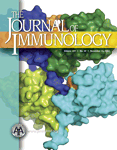J Immunol:发现囊性纤维化疾病新的治疗靶标
2013-05-06 Beyond 生物谷
近日,温哥华研究人员发现了导致囊性纤维化疾病(CF)患者肺损伤的炎症反应的细胞分子途径,抑制该分子通路或许可以减少炎症反应。这一发现提供了一个潜在的新药物靶标来治疗CF肺部疾病。 这项研究结果发表在最新一期的Journal of Immunology杂志上。在这项研究中,研究人员在实验室中将CF肺细胞与正常肺细胞暴露于细菌后,比较了两种细胞的免疫反应。在健康的细胞中,细胞接触细菌后引起细胞分泌特
近日,温哥华研究人员发现了导致囊性纤维化疾病(CF)患者肺损伤的炎症反应的细胞分子途径,抑制该分子通路或许可以减少炎症反应。这一发现提供了一个潜在的新药物靶标来治疗CF肺部疾病。
这项研究结果发表在最新一期的Journal of Immunology杂志上。在这项研究中,研究人员在实验室中将CF肺细胞与正常肺细胞暴露于细菌后,比较了两种细胞的免疫反应。在健康的细胞中,细胞接触细菌后引起细胞分泌特殊分子,吸引免疫细胞对抗感染。在CF肺细胞中,研究人员发现了一系列分子事件即未折叠蛋白反应(unfolded protein response),该反应活性大大提高。
结果导致CF肺细胞分泌更多的分子,吸引过量的免疫细胞,导致炎症反应过度增加。他们还发现,用特殊的化学物质处理CF细胞后,未折叠蛋白反应和细胞的免疫应答能恢复到正常水平。
CF是最常见的遗传性疾病,随着时间的推移,感染和炎症会慢慢损害肺部组织,并可能导致患者需要肺移植。目前,治疗肺部炎症的类固醇消炎药往往有显著的副作用。研究人员正计划用大量的肺细胞样本来进一步验证新发现的CF肺部疾病治疗靶标。
与囊性纤维化相关的拓展阅读:
- J Immunol:发现囊性纤维化疾病新的治疗靶标
- JBC:囊性纤维化新的治疗方法
- JAMA:对于非囊性纤维化支气管扩张患者 长期用大环内酯类有利有弊 可降低肺部感染加重发生率,但增加耐药率
- JAMA:大环内酯类抗生素可缓解非囊性纤维化支气管扩张患者的感染性肺病
- JAMA:对于非囊性纤维化支气管扩张患者 长期使用大环内酯类有利有弊
- FDA批准妥布霉素吸入粉剂治疗肺囊性纤维化
- CHEST:吸入甘露醇或可减少非囊性纤维化支气管扩张患者抗生素使用量
- AJRCMB:吩嗪化合物损伤囊性纤维化病人的肺部功能
- JCI:囊性纤维化引发病人患糖尿病的机制
- Lancet:阿奇霉素防止非囊性纤维化支气管扩张症病情恶化
- PNAS:恢复缺陷蛋白功能可有效治疗囊性纤维化病人
- FASEB J:新发现为囊性纤维化和慢阻肺病人治疗带来希望
- ATS:幼儿囊性纤维化 高渗盐水不优于等渗盐水
- FEMS Immun & Med Micro:细菌Psl多聚糖为治疗肺囊性纤维化病人提供新思路
- Nat Gene:基因变异可导致囊性纤维化病人胎儿出现肠梗阻 更多信息请点击:有关囊性纤维化更多资讯

doi:10.4049/jimmunol.1103661
PMC:
PMID:
Atypical Activation of the Unfolded Protein Response in Cystic Fibrosis Airway Cells Contributes to p38 MAPK-Mediated Innate Immune Responses
Christoph J. Blohmke*, Matthew L. Mayer, et al.
Inflammatory lung disease is the major cause of morbidity and mortality in cystic fibrosis (CF); understanding what produces dysregulated innate immune responses in CF cells will be pivotal in guiding the development of novel anti-inflammatory therapies. To elucidate the molecular mechanisms that mediate exaggerated inflammation in CF following TLR signaling, we profiled global gene expression in immortalized human CF and non-CF airway cells at baseline and after microbial stimulation. Using complementary analysis methods, we observed a signature of increased stress levels in CF cells, specifically characterized by endoplasmic reticulum (ER) stress, the unfolded protein response (UPR), and MAPK signaling. Analysis of ER stress responses revealed an atypical induction of the UPR, characterized by the lack of induction of the PERK–eIF2α pathway in three complementary model systems: immortalized CF airway cells, fresh CF blood cells, and CF lung tissue. This atypical pattern of UPR activation was associated with the hyperinflammatory phenotype in CF cells, as deliberate induction of the PERK–eIF2α pathway with salubrinal attenuated the inflammatory response to both flagellin and Pseudomonas aeruginosa. IL-6 production triggered by ER stress and microbial stimulation were both dependent on p38 MAPK activity, suggesting a molecular link between both signaling events. These data indicate that atypical UPR activation fails to resolve the ER stress in CF and sensitizes the innate immune system to respond more vigorously to microbial challenge. Strategies to restore ER homeostasis and normalize the UPR activation profile may represent a novel therapeutic approach to minimize lung-damaging inflammation in CF.
本网站所有内容来源注明为“梅斯医学”或“MedSci原创”的文字、图片和音视频资料,版权均属于梅斯医学所有。非经授权,任何媒体、网站或个人不得转载,授权转载时须注明来源为“梅斯医学”。其它来源的文章系转载文章,或“梅斯号”自媒体发布的文章,仅系出于传递更多信息之目的,本站仅负责审核内容合规,其内容不代表本站立场,本站不负责内容的准确性和版权。如果存在侵权、或不希望被转载的媒体或个人可与我们联系,我们将立即进行删除处理。
在此留言











#治疗靶标#
66
#囊性#
68
#靶标#
49